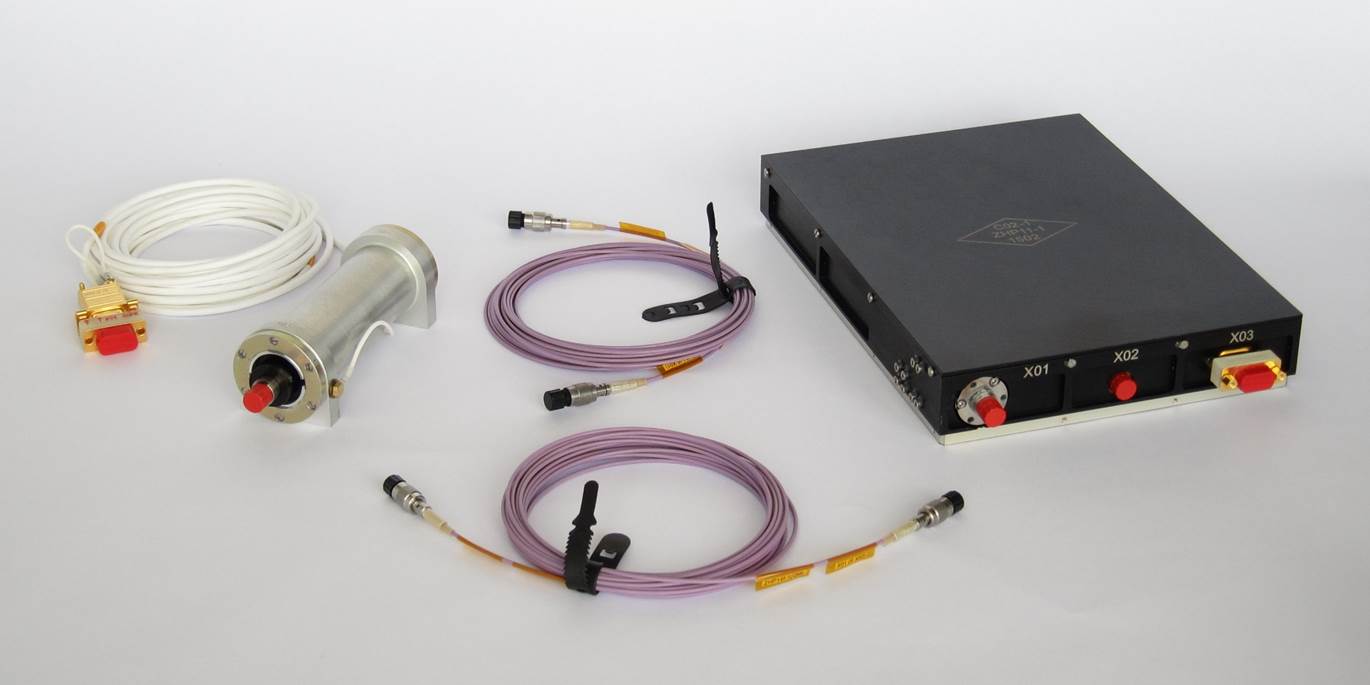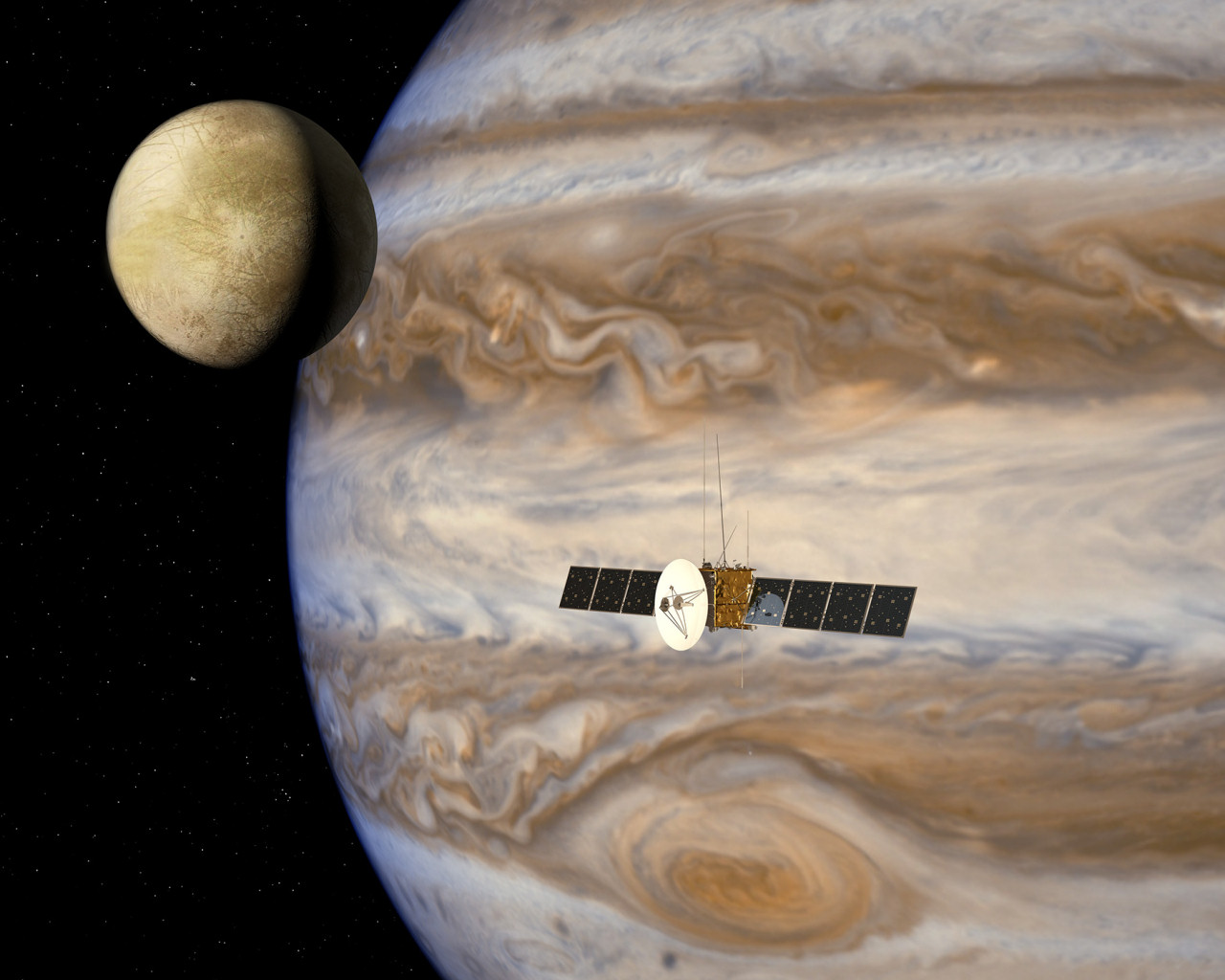Research
Our group is involved in the design and development of the Coupled Dark State Magnetometer (CDSM). The CDSM magnetometer prototype is realised in cooperation with the Space Research Institute (IWF) of the Austrian Academy of Sciences and is – at the moment - intended for space missions. The first demonstration of this new instrument as a space application will take place aboard the Chinese Seismo-Electromagnetic Satellite (CSES) mission. Furthermore, the CDSM was selected for the JUpiter ICy Moon Explorer (JUICE) mission of the European Space Agency (ESA) to visit the Jovian system with a currently scheduled launch on 13th April 2023.

Left: Sensor unit with embedded 87Rb vapour cell
Middle: optical fibre wires (radiation tolerant)
Right: Electronic Box
Working Principle
The benefit of the CDSM magnetometer is its ‘alloptical’ measurement of the magnetic field strength. Its working principle is based on a quantum optical phenomenon, the Coherent Population Trapping (CPT) effect. This effect causes a trapping of atomic population in so-called dark states. The stringent preparation conditions of the CPT effect results in very narrow dark resonance features. These resonances are suited for measuring the magnetic field dependent (Zeeman-) energy level shift within the 87Rb D1 and D2 - hyperfine structure. The combination of several of these dark state resonances enables an omni-directional (i.e. dead-zone free) measurement of the magnetic field and additionally reduces line shift effects (light shift, buffer gas induced temperature shift) which increases the measurement accuracy.
Space Missions
China Seismo-Electromagnetic Satellite (CSES):
In Jan 2018, the CDSM was launched as part of the China Seismo-Electromagnetic Satellite (CSES) mission. The satellite still orbits the earth in a distance of 500 km and investigate among others the correlation between natural electromagnetic phenomenon and seismic events.
JUpiter ICy moons Explorer (JUICE):
With the lunch on 13th April 2023, the European Space Agency (ESA) will investigate Jupiter and its three largest moons, Ganymede, Callisto and Europa. The mission addresses two themes of the ESA’s Cosmic Vision program: What are the conditions for planet formation and emergence of life? How does the Solar System work? The CDSM will be part of this mission as a key element of the J-MAG instruments. At the moment research and development is going on for further improvements of the CDSM concerning this ESA mission.

Artist's impression of JUICE
Copyright: ESA/AOES